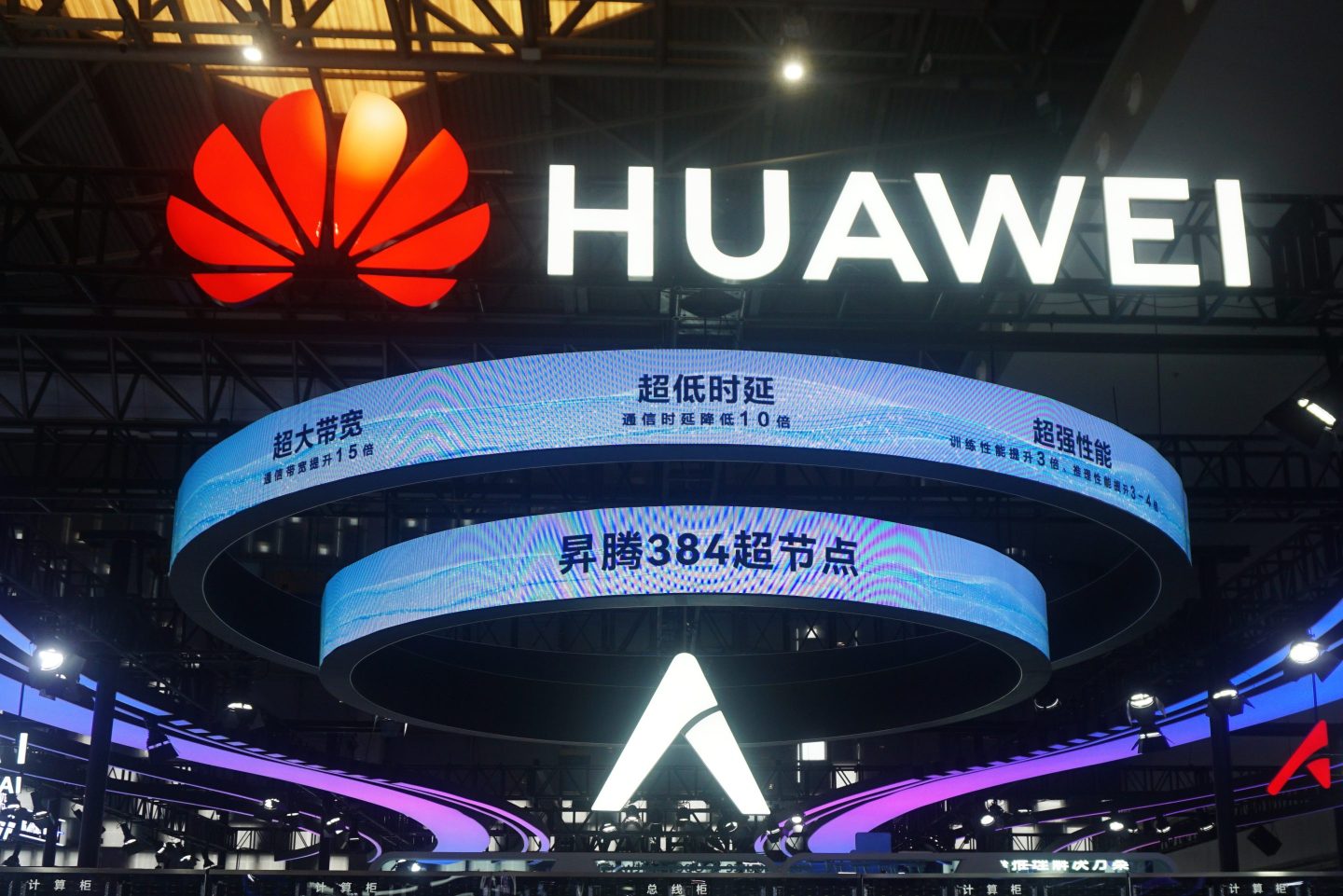Huawei, the company most connected to China’s drive for tech self-sufficiency, unveiled its AI chip plans on Thursday, laying down the product roadmap for a semiconductor division that’s become increasingly important to both the company and to the country more broadly.
On Thursday, Huawei rotating chair Eric Xu revealed the next iterations of the company’s Ascend AI chips. Huawei will release the Ascend 950PR in the first quarter of 2026, followed by the Ascend 950DT at the end of that same year. The Ascend 960 and the Ascend 970 would follow in Q4 2027 and Q4 2028 respectively. Xu noted that all the chips will come with Huawei-designed high-bandwidth memory.
Huawei also unveiled its new SuperPoD cluster designs, which link together thousands of Ascend chips. Xu called the cluster “a single logical machine, made up of multiple physical machines that can learn, think, and reason as one,” according to an official company transcript of his remarks.
“We’re pretty confident that, for the next few years, the Atlas 950 SuperPoD will remain the world’s most powerful SuperPoD. And it will far exceed its counterparts across all major metrics,” Xu said.
Clustering chips together is one way that Huawei is trying to keep up with Nvidia, the market leader in AI chips. Due to U.S. sanctions, Huawei can’t access the most advanced chip production techniques used by manufacturers like TSMC. Products like the SuperPod allow Huawei to connect less powerful chips to get higher performance.
In June, Huawei founder Ren Zhengfei told state media that the company’s chips were still a generation behind processors from the U.S., but packaging techniques could help close the performance gap.
AI chip rush
Huawei isn’t the only Chinese company working to develop AI processors.
Smaller chip startups like Cambricon are trying to manufacture processors domestically. China’s big tech companies, like Baidu and Alibaba, are also designing their own AI chips in-house.
Optimism over AI chips is helping to boost Chinese tech stocks. Shares in Chinese chip manufacturing “fab” Semiconductor Manufacturing International Corporation, which works with Huawei to make the Ascend chips, are up by around 35% in the past month. Cambricon and Baidu are both up by around 50% over the same period.
Investors have piled into China’s tech sector since the start of the year, when Hangzhou-based startup DeepSeek released its open-source AI model.
“DeepSeek has come up with new ways to train models using significantly less computing power. But artificial general intelligence (AGI) and physical AI will still need a massive amount of computing power,” Xu said Thursday. “We believe that computing power is—and will continue to be—key to AI.”
Beijing steps in
AI chips designed by Huawei and others have taken on greater importance in China due to the country’s constrained access to Nvidia’s top-of-the-line products.
Since 2022, the U.S. has barred Nvidia and fellow chipmaker AMD from selling their most advanced processors to China. Both companies have consequently had to design special, less powerful China-focused versions of their processors that complied with U.S. restrictions. These modified chips were in demand in China, since they still were more powerful and easier-to-use than what local chipmakers could produce. But now, locally-made chips may be considered as good as what Nvidia can sell.
Chinese officials are also looking more skeptically at Nvidia’s chips. Earlier this week, Beijing reportedly ordered tech companies to stop using Nvidia’s RTX Pro 6000D, one of the company’s China-focused chips; that follows earlier scrutiny of the H20, another other China-focused processor.













